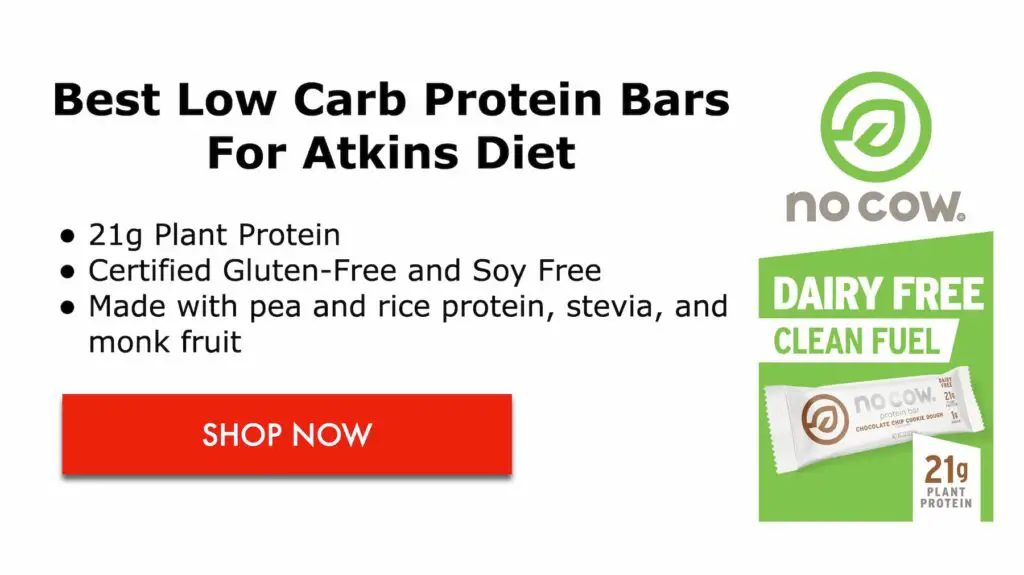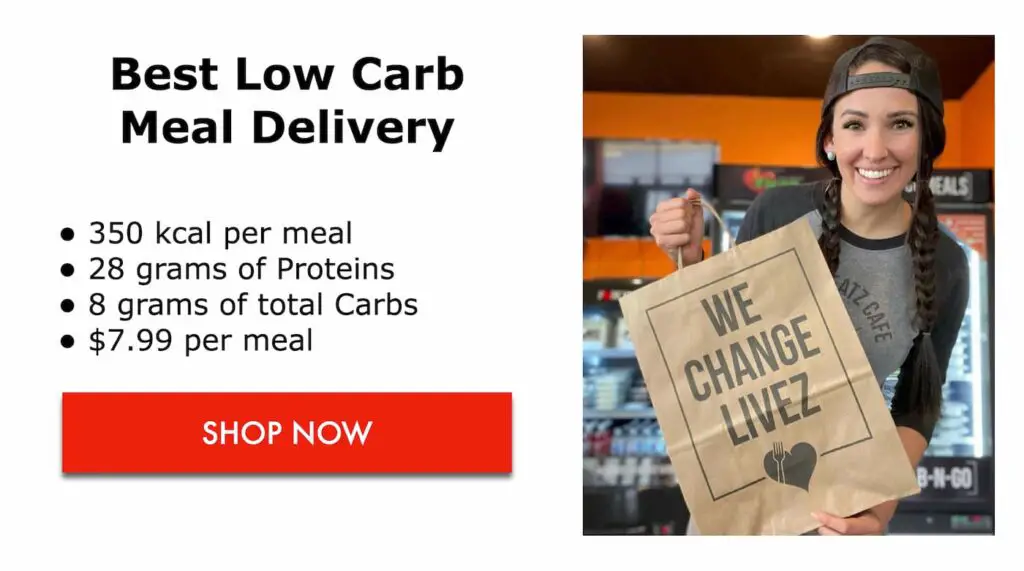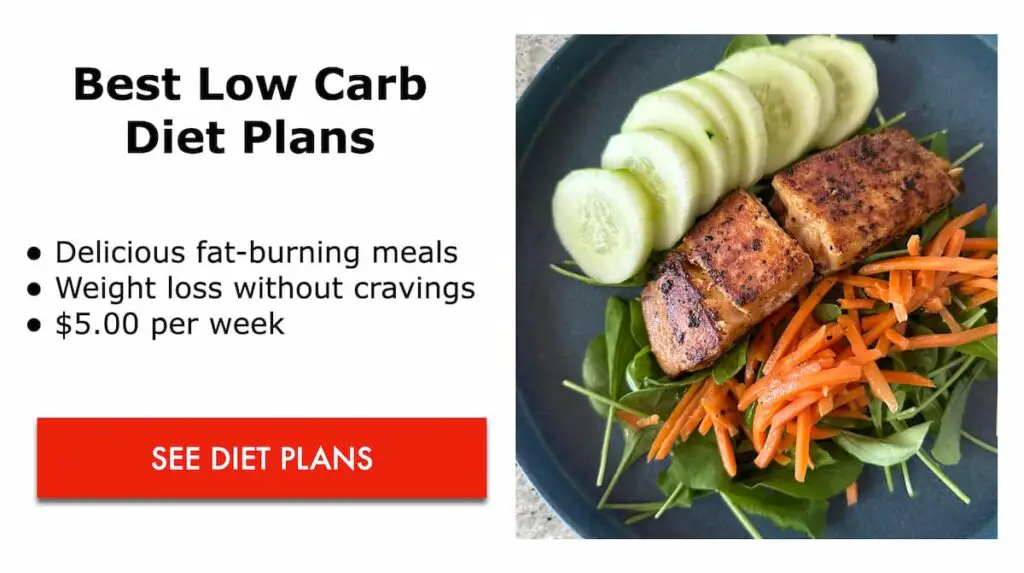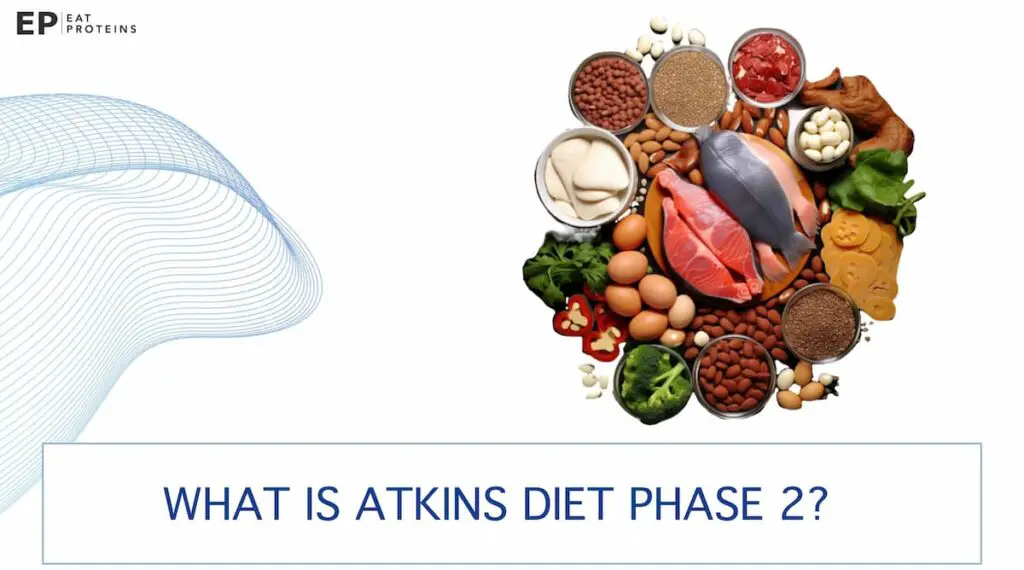Atkins Phase 2, also called the “Balancing” phase, is the second part of the Atkins 20 diet where you reintroduce various carbs into your diet by adding foods like nuts, seeds, and berries. The main goal of Atkins Phase 2 is to find your carb balance while increasing your metabolism and continuing to lose weight. You start with 25 grams of net carbs daily and gradually increase in 5-gram increments every 7 days.
When asking about how long should you stay in Atkins Phase 2, it’s typical to stay in this phase until you’re within 10 pounds of your goal weight. For further context, a 2006 meta-analysis by Alain J. Nordmann and colleagues from the Basel Institute for Clinical Epidemiology found that low-carb diets led to more weight loss than low-fat diets at the 6-month mark. However, this advantage diminished by the 12-month point.
Some of the most common challenges that people face in Atkins Phase 2 include “carb creep,” where you might unknowingly consume more carbs than planned, and the return of cravings for certain foods. Potential side effects of Atkins Phase 2 include weight loss plateaus, cravings, or digestive issues as you reintroduce different types of carbs. This article covers 8 steps on how to do Atkins Diet Phase 2, which are listed below.
- Kickstart with 25 net carbs a day
- Explore the Atkins Phase 2 food list
- Master your Atkins Phase 2 meal planner
- Get right the carb allowance for Phase 2 of the Atkins diet
- Whip up some Atkins Phase 2 recipes
- Navigate alcohol in Atkins Phase 2
- Stay consistent throughout your Atkins Phase 2 journey
- Transition to Phase 3
EatProteins.com is a reader-supported platform. Purchases made through our links may earn us a commission at no extra cost to you.
1. Kickstart with 25 net carbs a day
Kickstarting with 25 net carbs a day means you begin your Atkins phase 2 diet by limiting your daily net carb intake to just 25 grams. This is important because it helps your body transition into ketosis, where it burns fat for fuel instead of carbs.
Start by calculating the net carbs in your meals (total carbs – fiber), aiming to keep the sum under 25 grams for the day. Use a carb-tracking app or a food diary to keep track of your net carb intake. A frequent error is confusing total carbs with net carbs, which can throw off your daily count.

You can either plan your meals or make on-the-fly choices, as long as you stay within the 25 net carb limit. Allocate about 15-30 minutes daily for meal planning and carb counting. If you go over the limit, don’t stress; just aim to stay under 25 net carbs the next day.
2. Explore the Atkins Phase 2 food list
Exploring the Atkins Phase 2 food list means reviewing and understanding the types of foods you can reintroduce into your diet during this phase. Knowing the Phase 2 food list helps you diversify your diet while staying within your carb limits, aiding in sustainable weight loss.
People often reintroduce too many high-carb foods too quickly, leading to weight gain or stalls. Also, overestimating portion sizes and not tracking your calorie intake can derail your progress. Start by reading the official Atkins Phase 2 food list, categorize foods by carb count, and gradually add them to your meals while monitoring your weight and cravings.
Some Phase 2 foods like berries and nuts can be more expensive, so budget accordingly. If you experience a weight loss stall or cravings, revert to Phase 1 foods for a week and then reintroduce Phase 2 foods more slowly.
3. Master your Atkins Phase 2 meal planner
Mastering your Atkins Phase 2 meal planner involves creating a detailed Atkins diet meal plan that aligns with the Phase 2 guidelines for carb intake and food choices. Proper meal planning ensures you stay within your daily net carb limits, aiding in sustainable weight loss.
A common mistake is not meticulously tracking and measuring food portions, leading to accidental overconsumption of carbs. To avoid hidden carbs, you can use the Atkins app, a digital food scale, and net carb calculators to stay on track. Start by listing acceptable foods, allocate daily net carbs, plan meals for the week, and then shop for ingredients with an Atkins diet grocery list.
4. Get right the carb allowance for Phase 2 of the Atkins diet
Getting the right carb allowance for Phase 2 of the Atkins diet involves gradually increasing your daily net carb intake by 5 grams per week. Incremental carb increases help you find your carb balance without stalling weight loss.
Take your time with the Atkins Phase 2; adding carbs too quickly can stall your weight loss. You have options for tracking: go old-school with manual logging or opt for a digital tool like a food diary app or carb calculator for pinpoint accuracy.
Allocate at least a week for each 5-gram increase to properly gauge its impact. If weight loss stalls, revert to your last successful carb intake and reassess. This step is generally suitable for adults but should be customized for children or seniors under medical supervision.
5. Whip up some Atkins Phase 2 recipes
This step involves cooking recipes that align with the Atkins Phase 2 dietary guidelines, which allow for a broader array of carbs. Sticking to Phase 2 recipes helps you maintain weight loss while reintroducing carbs in a controlled manner.
Start by selecting an Atkins Phase 2-approved recipe, gather all the ingredients, and then follow the cooking instructions. Don’t eyeball measurements or substitute ingredients that aren’t Phase 2-approved. You gonna need a kitchen scale, measuring cups, and the Eat Proteins website for Phase 2 recipes.
Allocate around 30-60 minutes for cooking and prep time. If a recipe flops, have a list of quick, Atkins Phase 2-approved pre-packaged meals as a backup, or try Atkins diet meal delivery services.

6. Navigate alcohol in Atkins Phase 2
Navigating alcohol in Atkins Phase 2 involves reintroducing alcoholic beverages in moderation while keeping track of net carbs. Managing alcohol intake is crucial to maintaining weight loss progress and staying within your daily net carb limit.
Overindulging and choosing high-carb mixers are common mistakes to steer clear of. Start by choosing low-carb alcoholic options, measure servings accurately, and log them into your carb tracker. Opt for alcohol-free days, or choose beverages like seltzer with a splash of lemon as an alternative to alcoholic drinks.
7. Stay consistent throughout your Atkins Phase 2 journey
Staying consistent in Atkins Phase 2 means adhering to your plan for at least 4-8 weeks. Stick to the plan of starting with 25 grams of net carbs daily and increasing in 5-gram increments. When dining out, check the menu in advance and choose dishes that align with your carb limit. Don’t hesitate to ask for modifications, like swapping out fries for a salad, to keep your meal on track.

In terms of exercise, schedule your workouts at the same time each day to make it a habit. Mix up your exercise routine to keep it interesting but aim for at least 30 minutes a day. Carry a refillable water bottle and aim to drink at least 8 cups of water a day. Set reminders on your phone to sip water throughout the day.
8. Transition to Phase 3
You’re ready to transition to Atkins Phase 3 when you’re within 10 pounds of your goal weight and have successfully reintroduced a variety of carbs without stalling weight loss. Your cravings and extreme hunger should also be under control.
During the transition to Phase 3, you can introduce more carb-rich foods like fruits, starchy vegetables, and whole grains. The key is to do it gradually and monitor their impact on your weight and cravings.
If you find that you’re gaining weight, experiencing cravings, or stalling in your weight loss, it’s a sign to revert to Phase 2. The goal is to find your carb balance, and sometimes that requires stepping back.
What is Atkins Phase 2?
Atkins Phase 2, also known as the “Balancing Phase,” is about balancing your diet by slowly adding different foods like nuts, seeds, and berries, whereas Phase 1 (Induction) is more restrictive, focusing on high protein and low carbs. In Phase 2, you’re allowed to climb the “Carb Ladder,” which you couldn’t in Phase 1.

Phase 2 of the Atkins diet aims for sustainable weight loss by allowing you to reintroduce carbs gradually while monitoring your weight. You typically stay in this phase until you’re within 4 kilograms of your goal weight. Vegetarians or those looking to slow their rate of weight loss may choose to transition into Phase 3 sooner.
What is the difference between Atkins Phase 1 and Phase 2?
The difference between Atkins Phase 1 and Phase 2 is that Phase 1, also known as Induction, is a strict low-carb phase to kickstart weight loss, while Phase 2 is about gradually reintroducing a broader array of carbs to find your carb balance. Phase 1 aims for rapid weight loss to jump-start your journey, while Phase 2 focuses on more sustainable, slower weight loss as you reintroduce carbs.
In Atkins Phase 1, you’re limited to 18-22 grams of net carbs per day, mostly from high-fiber veggies. In Phase 2, you start with 25 grams of net carbs and can increase in 5-gram increments, potentially reaching between 30 and 80 daily grams of net carbs.
What are some foods to avoid in Atkins Phase 2?
In Atkins Phase 2, you should steer clear of high-carb foods like bread, pasta, and sugary snacks. Also, avoid fruits that are not on the approved list, such as bananas and grapes, as they can spike your carb intake and hinder weight loss.
What foods are allowed in Atkins Phase 2?
In Atkins Phase 2, you can eat foods from Phase 1 and start adding nuts, seeds, strawberries, blueberries, melon, cottage cheese, and yogurt. You can add them in limited quantities as you climb the “Carb Ladder.” The focus is on adding higher-carb veggies, nuts, seeds, and some fruits. The best protein sources in Atkins Phase 2 remain similar to Phase 1, including meat, fish, eggs, and certain dairy products. The focus is still on high-quality, low-carb protein options.

Who should move on to Atkins Phase 2?
People who have completed Phase 1 and are looking to reintroduce a broader array of carbs should move on to Phase 2. If you’re within 10 pounds of your goal weight, Phase 2 is your next step. On the other hand, if you haven’t achieved significant weight loss in Phase 1 or if you’re experiencing cravings and extreme hunger, you should stick with Phase 1. Those who are extraordinarily sensitive to carbs might also want to stay in Phase 1 longer.
